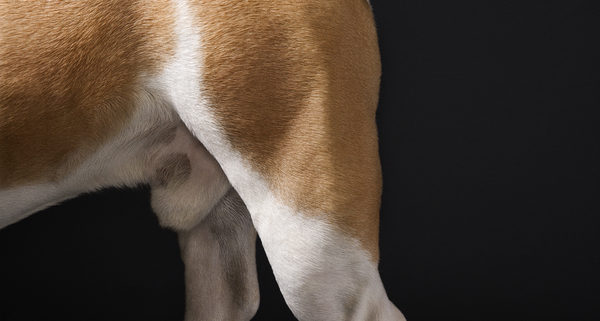In canines, OCD doesn’t usually stand for “obsessive-compulsive disorder.” OCD is the term used for osteochondritis dissecans, a cartilage condition affecting the joints. Cartilage protects the joints, and if it is damaged, there’s pain. OCD may appear in the shoulder or elbow of the front legs or the knee or hock of the rear limbs. While it requires surgical correction, there are numerous therapies that can help your dog get back to normal after his operation. Hydrotherapy is exceptionally effective for dogs with OCD.
Dogs at Risk
Although any dog might develop OCD, it’s far more common in large breeds, with males more often affected than females. Symptoms usually appear between the ages of 6 and 12 months, a rapid growth period. Vulnerable breeds include:
- Border collie
- English setter
- German shepherd
- Golden retriever
- Great Dane
- Labrador retriever
- Newfoundland
- Old English sheepdog
- Rottweiler
- Saint Bernard.
Normally, a young dog’s skeleton forms cartilage at the end of his long bones. In dogs with OCD, the bones don’t harden sufficiently and the cartilage doesn’t develop properly. Bits of cartilage – the so-called “joint mice” – break off, causing arthritic issues in young dogs. Inflammation is present, and the damaged cartilage or the joint mice rub painfully against the joint.
OCD Symptoms
At a time of life when most dogs can’t keep still, these poor pups have trouble walking. Lameness is the most obvious sign of OCD, and it may come on suddenly or gradually. Sometimes the lameness isn’t apparent until after exercise. The joint may swell, and the dog can’t bear weight on the leg. The dog will react if you touch the joint – it hurts.
If untreated, the dog’s muscles start wasting because of the constant pain and lameness.
Diagnosis and Treatment
Your vet diagnoses OCD based on X-rays, along with CAT scans and/or MRIs. She’ll take a fluid sample from the joint for testing to make sure an infection isn’t causing the symptoms. While rest may do the trick in some cases, the majority of dogs require surgical removal of the damaged cartilage and the joint mice.
Post-op Therapy
After your dog’s surgery, his activities are seriously restricted for up to six weeks. While he can’t run loose in the yard or go for walks on hard surfaces, he will require therapy during this period to help him recover. He’ll benefit from visits to a veterinary physiotherapist, who will show you how to perform some basic manual joint exercises on your pet. Your vet will recommend a glucosamine supplement to help with cartilage support.
Hydrotherapy
Swimming is one of the best therapies for dogs with OCD. These are young, energetic animals, and they want to move. In the pool, they aren’t restricted. Regular swimming helps build their muscles and allows them a wide range of joint movement. Since a dog doesn’t have to bear weight during his hydrotherapy sessions, he can move quite freely. The warm water reduces his joint pain and increases circulation to his soft tissues, alleviating stiffness. He’s also having a great time.
If you are in Maryland or Virginia and are considering hydrotherapy as a rehabilitation option, feel free to contact us!
Prognosis
Your dog’s recovery depends on various factors, including the OCD location. The Merck Veterinary Manual states, “Prognosis for recovery is excellent for the shoulders, good for the stifle [knee] joint, and fair for the elbow and tarsal joints.” Therapy plays a large part in the dog’s overall recuperation. OCD often leads to early-onset arthritis. Regular hydrotherapy sessions, along with a healthy diet and appropriate supplements, help keep these symptoms at bay.
References
http://www.petmd.com/dog/conditions/musculoskeletal/c_dg_osteochondrosis



My dog came up lame on April and vet said ocd . Was not bad at the time and now we have stopped doing his Agility and ball play . I would like to some more information on OCS